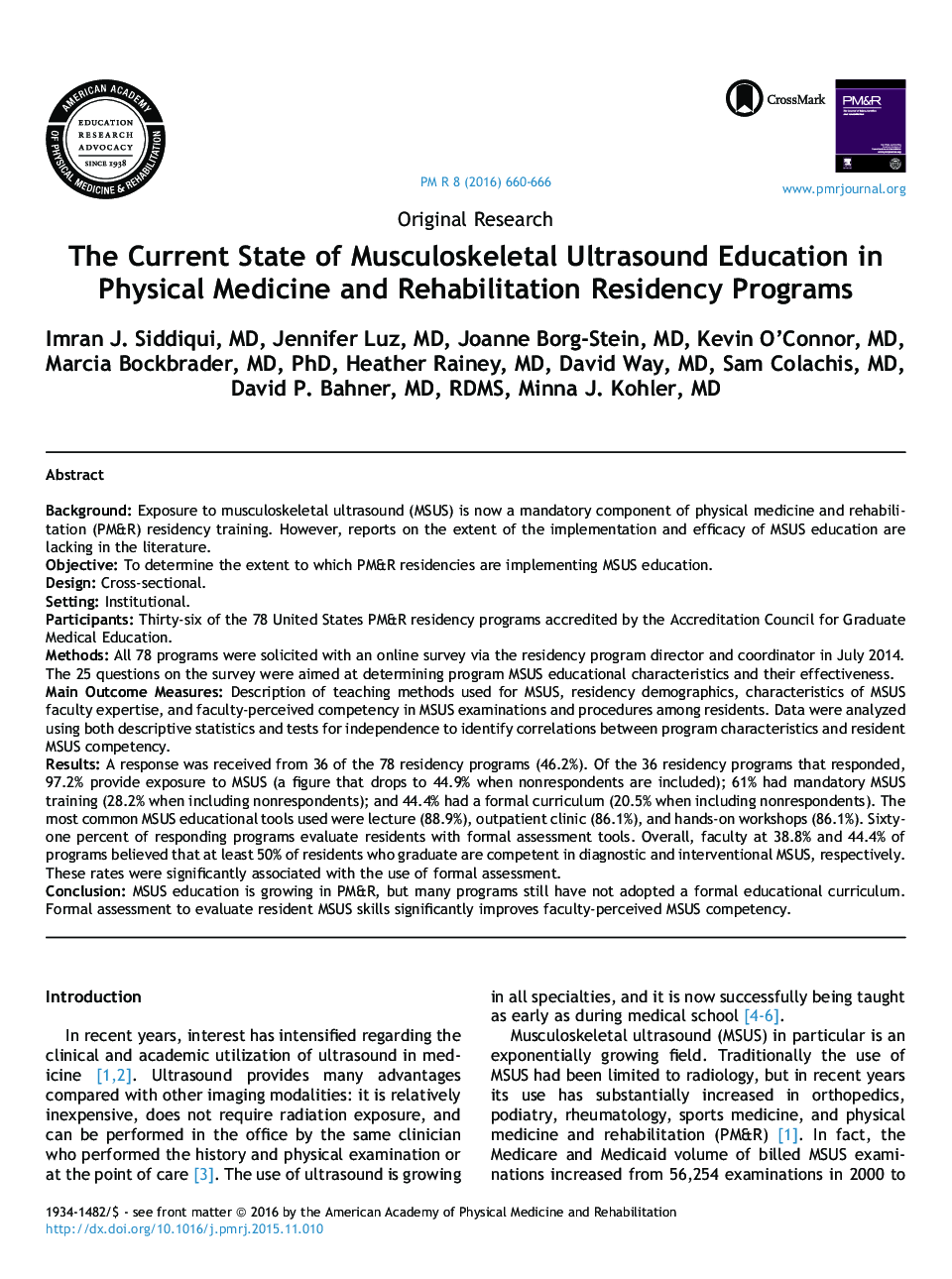| کد مقاله | کد نشریه | سال انتشار | مقاله انگلیسی | نسخه تمام متن |
|---|---|---|---|---|
| 2714856 | 1145284 | 2016 | 7 صفحه PDF | دانلود رایگان |
BackgroundExposure to musculoskeletal ultrasound (MSUS) is now a mandatory component of physical medicine and rehabilitation (PM&R) residency training. However, reports on the extent of the implementation and efficacy of MSUS education are lacking in the literature.ObjectiveTo determine the extent to which PM&R residencies are implementing MSUS education.DesignCross-sectional.SettingInstitutional.ParticipantsThirty-six of the 78 United States PM&R residency programs accredited by the Accreditation Council for Graduate Medical Education.MethodsAll 78 programs were solicited with an online survey via the residency program director and coordinator in July 2014. The 25 questions on the survey were aimed at determining program MSUS educational characteristics and their effectiveness.Main Outcome MeasuresDescription of teaching methods used for MSUS, residency demographics, characteristics of MSUS faculty expertise, and faculty-perceived competency in MSUS examinations and procedures among residents. Data were analyzed using both descriptive statistics and tests for independence to identify correlations between program characteristics and resident MSUS competency.ResultsA response was received from 36 of the 78 residency programs (46.2%). Of the 36 residency programs that responded, 97.2% provide exposure to MSUS (a figure that drops to 44.9% when nonrespondents are included); 61% had mandatory MSUS training (28.2% when including nonrespondents); and 44.4% had a formal curriculum (20.5% when including nonrespondents). The most common MSUS educational tools used were lecture (88.9%), outpatient clinic (86.1%), and hands-on workshops (86.1%). Sixty-one percent of responding programs evaluate residents with formal assessment tools. Overall, faculty at 38.8% and 44.4% of programs believed that at least 50% of residents who graduate are competent in diagnostic and interventional MSUS, respectively. These rates were significantly associated with the use of formal assessment.ConclusionMSUS education is growing in PM&R, but many programs still have not adopted a formal educational curriculum. Formal assessment to evaluate resident MSUS skills significantly improves faculty-perceived MSUS competency.
Journal: PM&R - Volume 8, Issue 7, July 2016, Pages 660–666
